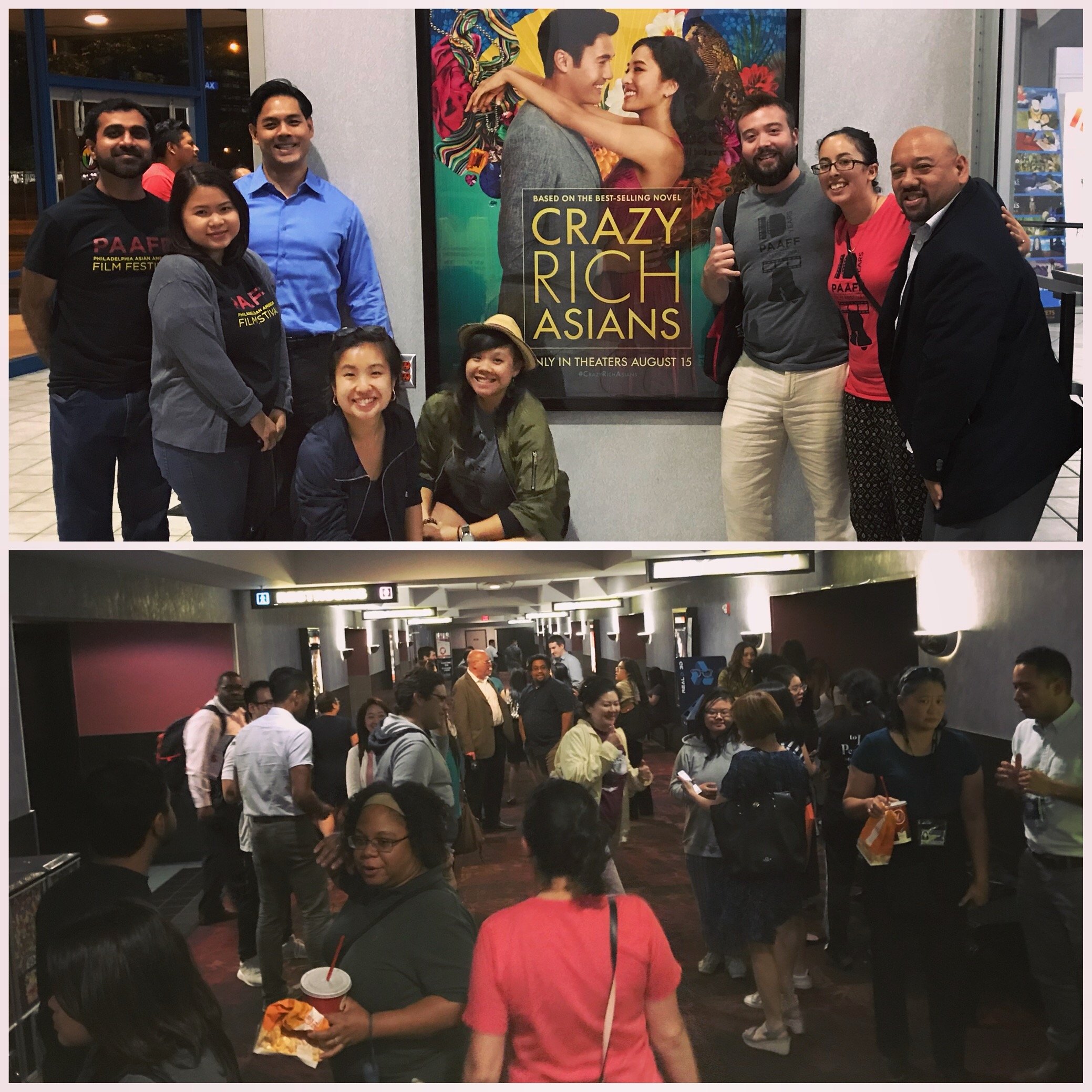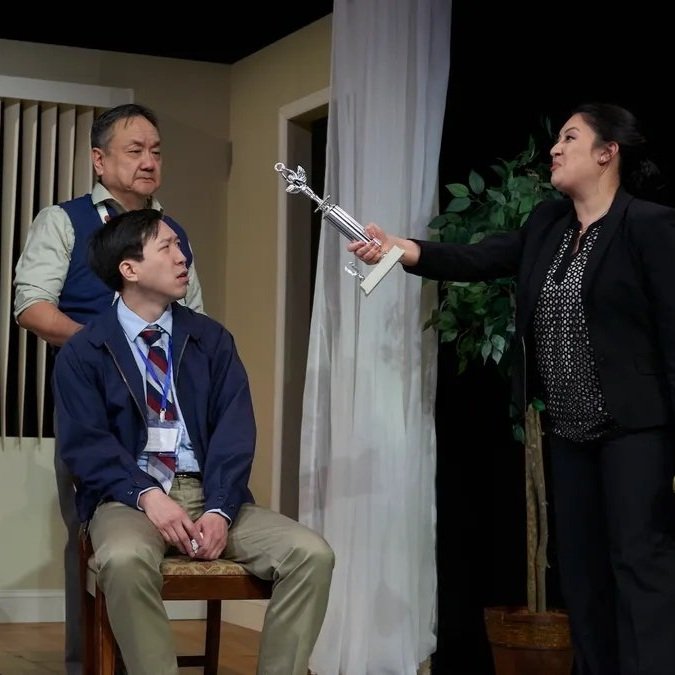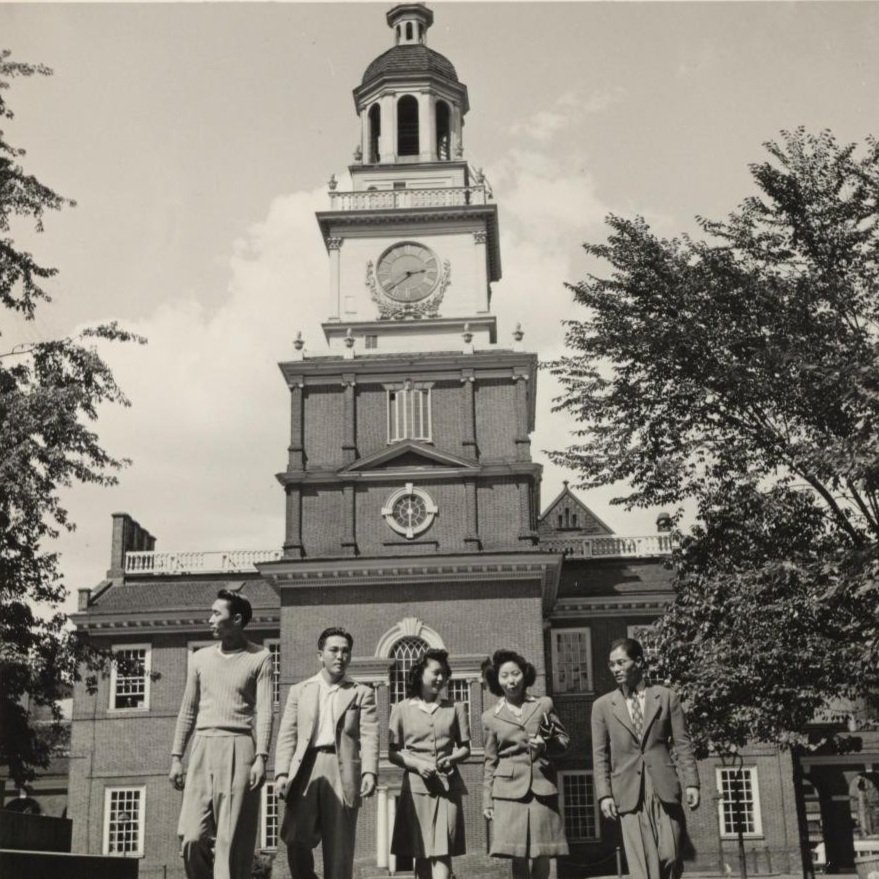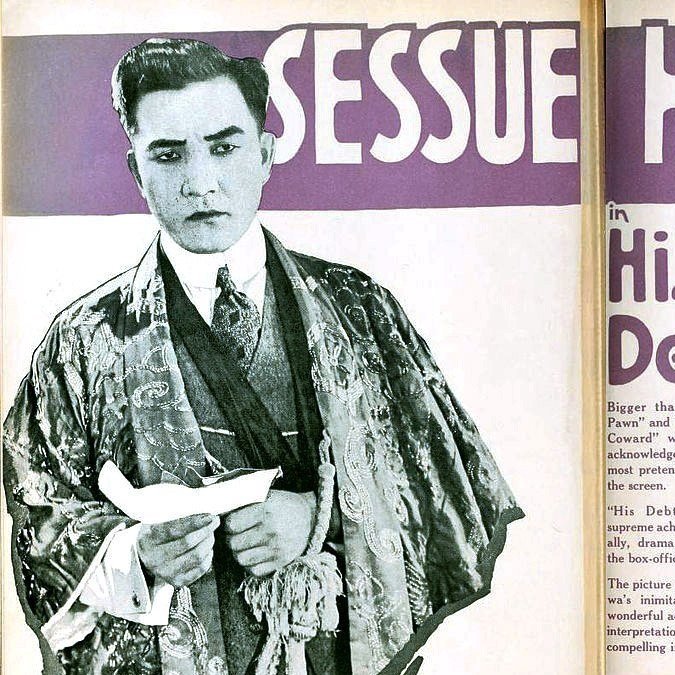
American Peril Exhibit Preview
Presented at Twelve Gates Arts in November 2018, “American Peril: Imagining the Foreign Threat” featured more than 60 printed materials and other original artifacts. The collection spanned nearly 150 years — from the Chinese Exclusion era to World War II-era anti-Japanese propaganda, and even contemporary anti-Muslim propaganda. Following are insights on the collection process and how casual antiquing turned into an exhibit that explores the history of anti-Asian racial propaganda.

Reclaiming Our Histories at the 2018 Heart Mountain Pilgrimage
Witnessing firsthand the trauma of incarceration while in Wyoming, the writer reveals closure to feelings of guilt and gains new insight for the JA community moving forward.

The Triumph of Crazy Rich Asians
PAAFF is one of over 100 organizations and individuals that bought out theaters nationwide as part of #GoldOpen, a grassroots campaign started by friends of the filmmakers to ensure a successful opening weekend. In addition to contributing toward the film’s bottom line, these screenings also create a buzz within the Asian-American/Pacific Islander community, which has made this opening weekend a true cinematic event (think Star Wars for Asians).

The crazy importance of “Crazy Rich Asians”
When Warner Brothers released the trailer for Crazy Rich Asians in late April, many Asian Americans were elated. The long-awaited adaptation of Kevin Kwan’s bestselling 2013 novel marks the first film with an all-Asian cast produced by a major Hollywood studio (Warner Brothers) in 25 years.
However, there has also been much speculation about whether this is actually a win for Asian Americans. Will it further perpetuate stereotypes such as the “model minority” myth?

American Cherry Blossom Festivals and Competing Visions of Japan
There are few occasions that showcase the wide-ranging spectrum of Japanese culture as effectively as the American cherry blossom festival, but as more contemporary pop culture seeps into these celebrations, are the traditional elements at risk of being lost?

“Isle of Dogs” Dogged by Doubts
The internet is abuzz with think pieces about Wes Anderson’s new feature-length animation Isle of Dogs. Set in Japan, it stars a mostly white, American-led vocal cast. Is the film an homage to Japanese culture or downright appropriation? As expected, much of the critical condemnation comes from writers of color, while Anderson apologists tend to be cinephiles of European descent.

Will Asian Americans get their “Black Panther” moment?
After just two weekends in theaters, Ryan Coogler’s superhero film Black Panther has already done more to advance African American media representation than any major Hollywood film in the past decade. That’s a remarkable achievement. But it’s also important to recognize and reconcile with the idea that in our own fight for representation, an Asian American victory will look very different.

A critical look at the critics of PAPA’s “Tiger Style!”
As a critic, it is important to speak your truth, but if you cannot relate to this particular play, chances are it wasn’t written for you.

A Philadelphia Story: Japanese American Resettlement
Following the conclusion of WWII, many Japanese Americans re-established roots in Philadelphia, helping to grow the community into a vibrant and thriving city that continues to celebrate that history today.

The Trouble with film and television diversity initiatives
Is it possible that media diversity initiatives do more harm than good for writers and directors of color? It’s a controversial take, I know, a bit like the age-old debate on affirmative action versus meritocracy. But it’s also a question that’s been bothering me for a while.

A Brief History of J-Horror
With Halloween just around the corner, most Americans will be watching scary movies this weekend. As an alternative to the typical slasher flick or survival horror, why not check out a few Japanese horror films instead? Here is a brief primer to help you get started.

Charlottesville and the Legacy of White Supremacy
In August 2017 at the weekend-long “Unite the Right” rally, white nationalists descended onto Charlottesville, Va., thrusting into the national spotlight a reality that many communities of color know to be true: White supremacy is alive and well in the United States.

My relatives survived Hiroshima. I know the damage that Trump's nuclear rhetoric will cause.
President Trump's increasingly hawkish statements on North Korean relations, including his dangerous "all options are on the table" rhetoric, are clear to me as a Japanese American to refer to the use of nuclear weapons. Read my Op-Ed published in the Philadelphia Inquirer.

The Untold Story of Asian Americans in Early Hollywood
It would shock many film buffs and casual viewers alike to learn that there was a time in early Hollywood cinema when several Asian Americans were among the top A-list celebrities.
In fact, one of the highest-paid actors in 1910s Hollywood was a Japanese immigrant named Sessue Hayakawa. Hayakawa would go on to become the first (and to this day only) Asian American to own a Hollywood studio, which netted more than $2 million in profits at the height of its popularity in the late 1910s.

Bronzeville, Little Tokyo
Ever wonder what became of the homes and businesses that Japanese Americans left behind during the incarceration of World War II?
The downtown Los Angeles neighborhood of Little Tokyo became home on April 29-30 to a site-specific multimedia installation titled “Bronzeville, Little Tokyo” — a project remembering the brief moment in history from 1942-45 when this decidedly Japanese American space became an African American enclave known as “Bronzeville.”

Standing in Solidarity with Native Hawaiians
We say AAPI, but how many of our organizations have Pacific Islander-serving programs? How many non-PI specific organizations have PI board members or staff, and how many of us can even name more than a couple PIs who we regularly engage in the work we do? In Pennsylvania and elsewhere in the East Coast, we barely have a PI population (.1% in PA according to the 2010 census), but does that mean we should exclude them from our discourse?

The Mixed-Race Experience Two Generations On
Because of negative social pressures, there was a time in my life when I was ashamed to be Japanese, and even did my best to hide it. Today, I am not only proud of being JA, but I actively celebrate it in the work I do both personally and professionally in advancing the Asian American and Pacific Islander Movement through the arts. By moving to Japan and learning to speak Japanese, I reclaimed aspects of our culture that were erased both deliberately through governmental intervention and by the passage of time. I also came to understand my own place within the JA community.

A New Model
As AAPIs, our demographic encompasses incredible diversity of ethnicity, color, religion, language and culture — yet, for the most part, we are able to relate with one another through our shared experiences of otherness and rally around each other’s causes.
As a microcosm of American society, AAPI community spaces have achieved a level of inclusiveness unparalleled. Let us become a new model for inclusion, solidarity and resistance and lead our communities through this unprecedented time.

Addressing Yellowface in Opera, Theater and Film
For about six weeks from August-October 2016, Philadelphia JACL had been involved in on-going discussions with Opera Philadelphia over offensive stereotypes in its production of Giacomo Puccini’s “Turandot.” Philadelphia board member Rob Buscher shares information about this process in case other organizers facing similar issues in their local areas find it helpful.

Turandot: Time to call it quits on Orientalist Opera?
As contemporary audiences become increasingly sophisticated in their ability to discern negative ethnic stereotyping and inherent gender bias, one has to wonder at what point do we retire a problematic piece?